Log Cabin Gold Mine
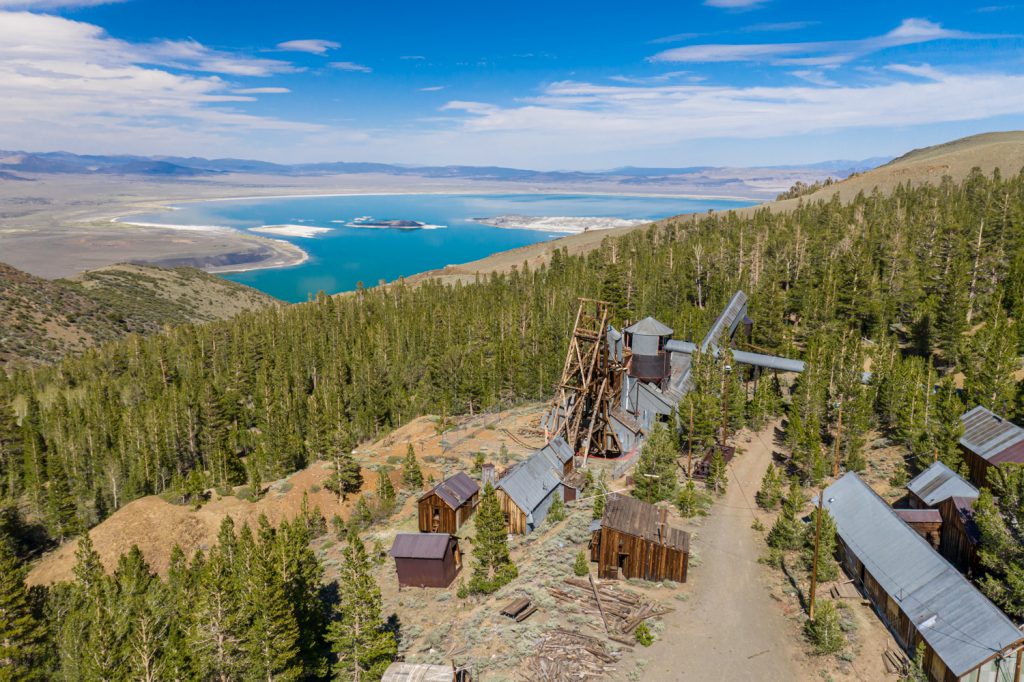
Set at an elevation of 9600′ amidst the mountain peaks above Mono Lake and the town of Lee Vining, the Log Cabin mine experienced prosperous boom periods before a presidential executive order during World War II banned the mining of non-strategic materials, leading to the shuttering of operations at the mine. The mine was maintained and ready to be reopened at a moment’s notice, however a couple fledgling attempts at reopening and the discovery of contamination of the grounds has instead led the mine to a slow decay.
Originally mined under the Mendocino Claim filed in 1890, the Log Cabin Gold Mine is situated in a beautiful yet precarious setting, 3000′ feet up a mountain from the Mono Lake town of Lee Vining. The first miners traveled up a road located behind the store of owner JT Hammond (the building, now Tioga Lodge, remains today just a mile north of Lee Vining on Highway 395). The steep climb up Tioga Canyon was done by horseback during the warmer months and snowshoe during the colder when snowpack at the mine could reach 25 feet deep. The extremity of the area’s winter conditions proved fatal on occasion, such as when two miners were returning by snowshoe from a St. Patrick’s Day celebration at one Lee Vining’s saloons and died in the cold before making it back up the mountain.
After a couple ownership and names changes, the mine was purchased by Frank Garbutt in 1939, who invested in many improvements, including adding a power substation on the grounds in order to allow more modern structures and machinery to be used at the mine.
The Log Cabin Gold Mine grew to consist of 4 vertical levels, with the lowest – approximately 1500′ in length and set 400′ below the surface – emptying out into a horizontal shaft where accumulated water could escape and drain to the creek down Tioga Canyon. A hoist house controlled the lift, powered by a large air compressor, that transported people and equipment up and down the shaft. The grounds of the Log Cabin mine contained an office, cook shack, bunkhouse that could house up to 72 workers, superintendent’s house, framing shed for onsite lumber milling, insulated meat house (as there were no powered refrigerators on the property), the hoist house, an assaying office, and one large structure where ore was run through a series of belts and tumblers to extract the gold from the quartz ore.
Owing to its remote location, throughout early years all winter supplies would be snowshoed to the property. When a new path was created to access the mine, this one reaching it from Highway 120 rather than following the steep course of Lee Vining Creek, a portion of that road contained a 37% grade. However at its peak, the mine was the most valuable gold producing mine in California and covered an area of 81 acres.
In 1942, during World War II, President Franklin D. Roosevelt would sign an executive order limiting all mining of non-strategic materials. This lead many mines throughout the country to convert to mining to lead, zinc and silver. The Log Cabin mine would close during these years, and remain closed until 1946 following the lifting of the order. However following its reopening, production had decreased. Coinciding with the price of gold in the United States being locked at $35/ounce while inflation and modernization costs continued to rise, the mine became unprofitable and closed in 1948.
During its closure, the mine was maintained and kept at the ready by a skeleton crew of staff. The idea was that if the price of gold should change and mining become profitable, the Log Cabin mine could open at full operating capacity at a moment’s notice and return to producing gold. This maintenance would come to an end in 1968, when the person charged with maintaining the mine died. All operations at the mine were ceased and the property would close up for good.
President Richard Nixon would free the price of gold in 1971, but by this point the mine maintenance had lapsed and it would not reopen.
The owners donated the land to the Boy Scouts of America, Los Angeles Area Council, who would lease it to some different companies for short periods of time who would attempt to extract gold from the mine tailings. Eventually the US Forest Service acquired the land.
While there were efforts made to gain historical status for the mine, the discovery of mercury contamination in 2007 would put a stop to those efforts.
Today the Log Cabin Gold Mine sits atop a mountain, with breathtaking views across Mono Lake three thousand feet below, part of the area’s dramatic and rich mining history slowly receding back into the ground it was built upon.
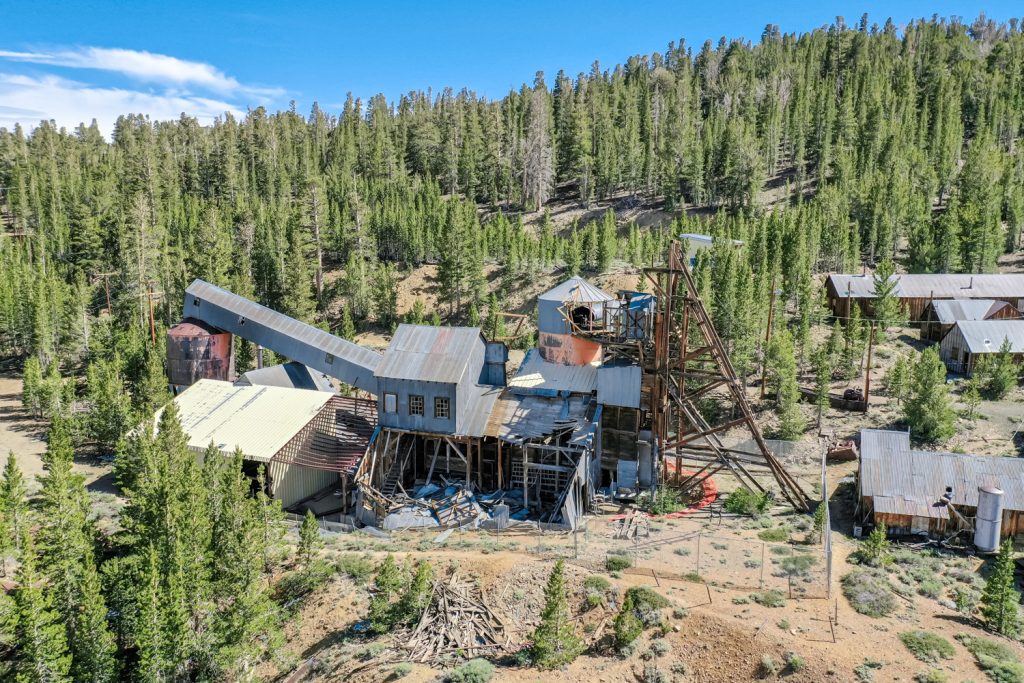
an onsite mill adjoined to the headframe could crush rock to slurry and process it through a series of belts and tumblers
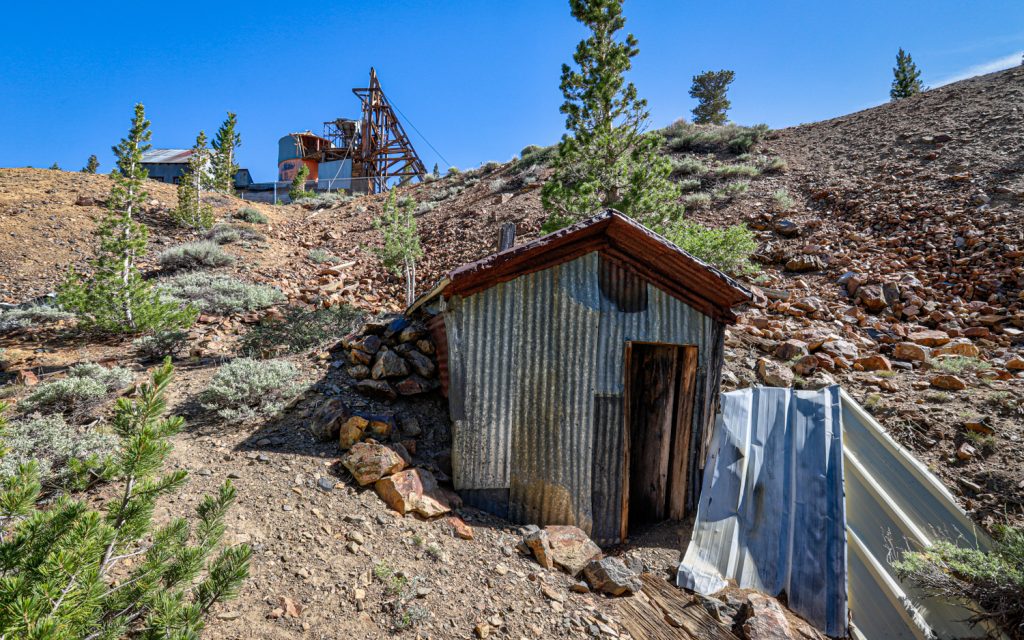
the exit of a horizontal shaft with the mill structure above
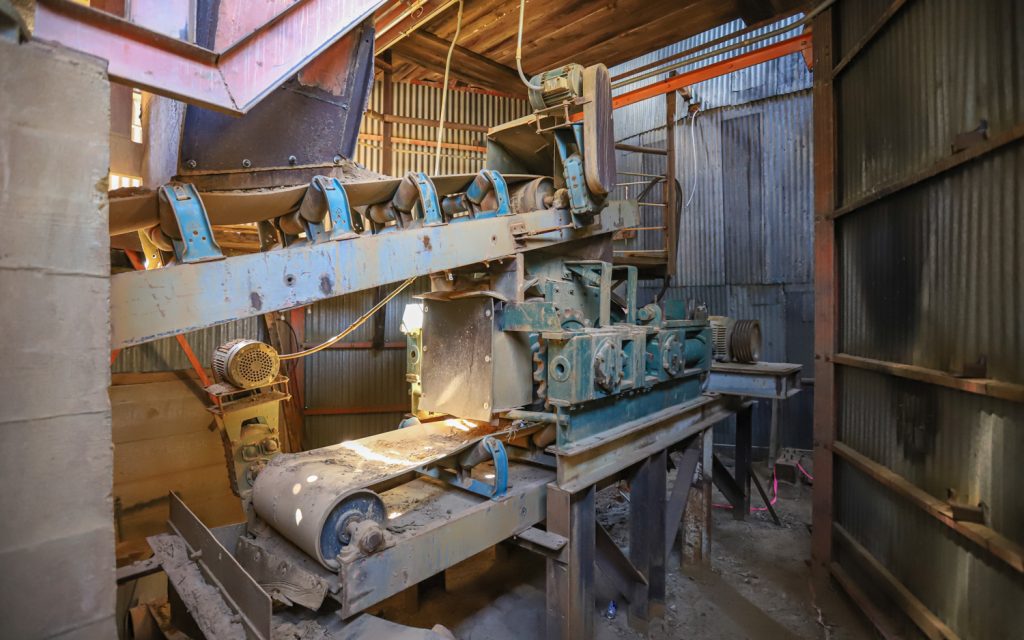
processing belts inside the mill
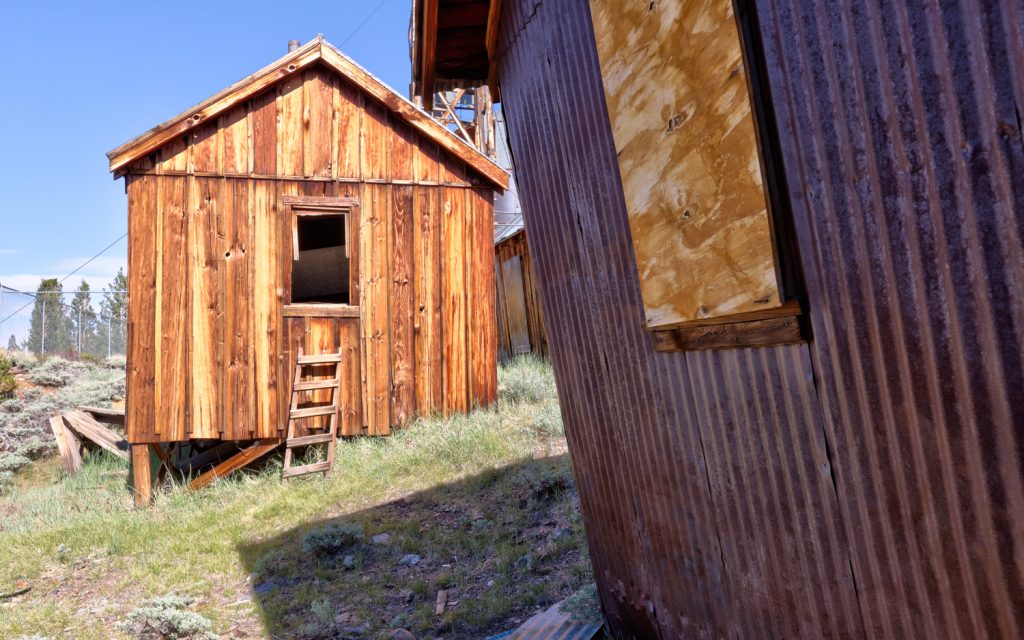
an assay office contained rock samples from stone within the claim
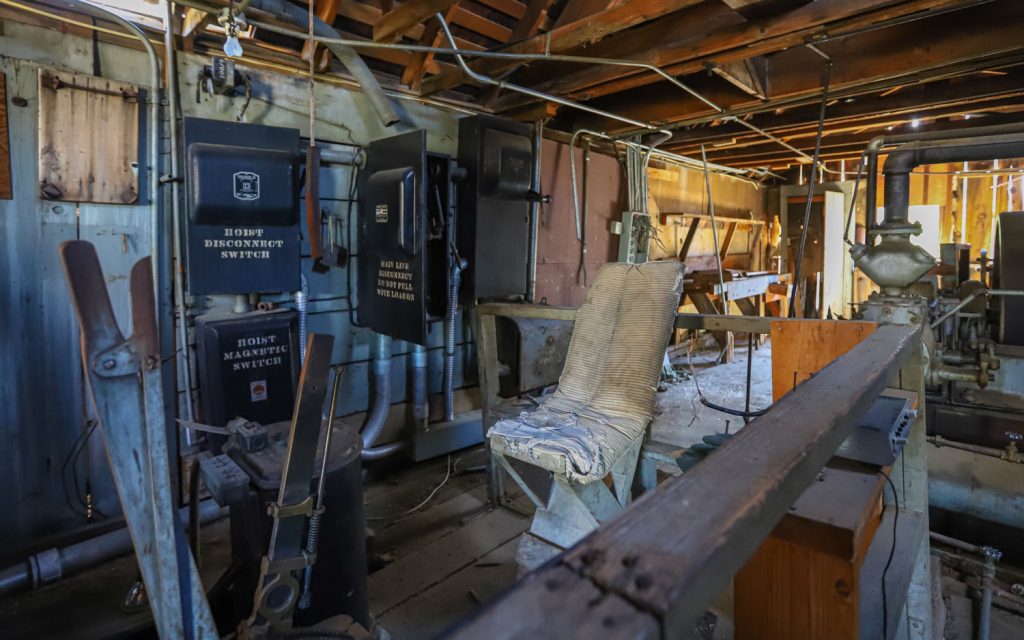
an operator controlled the lift, using an air compressor-powered hoist to raise and lower workers and equipment from the mine.
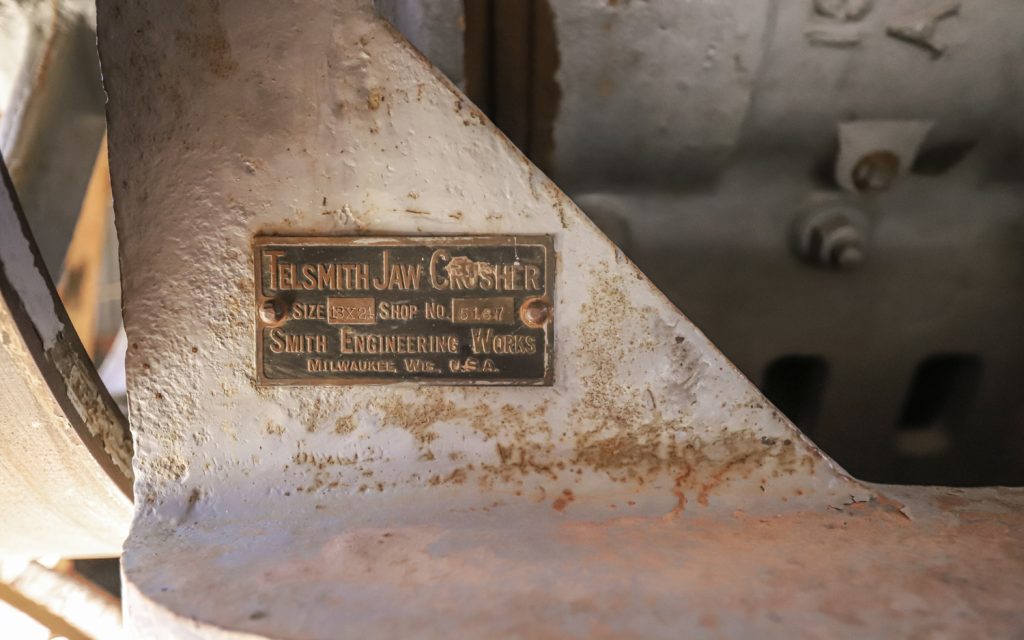
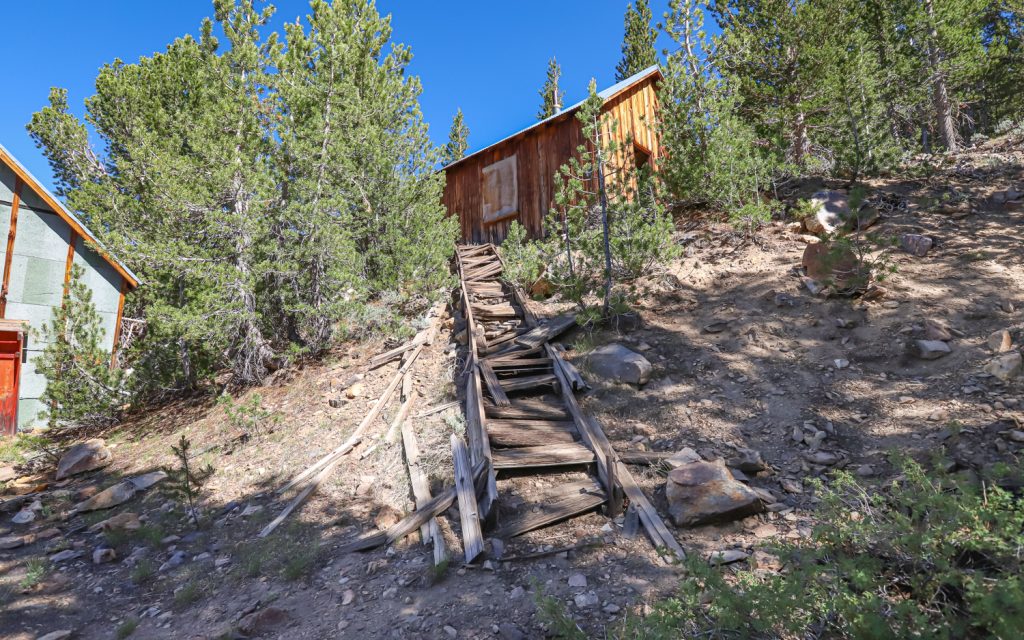
stairs to the wooden bunkhouse that could house up to 72 workers
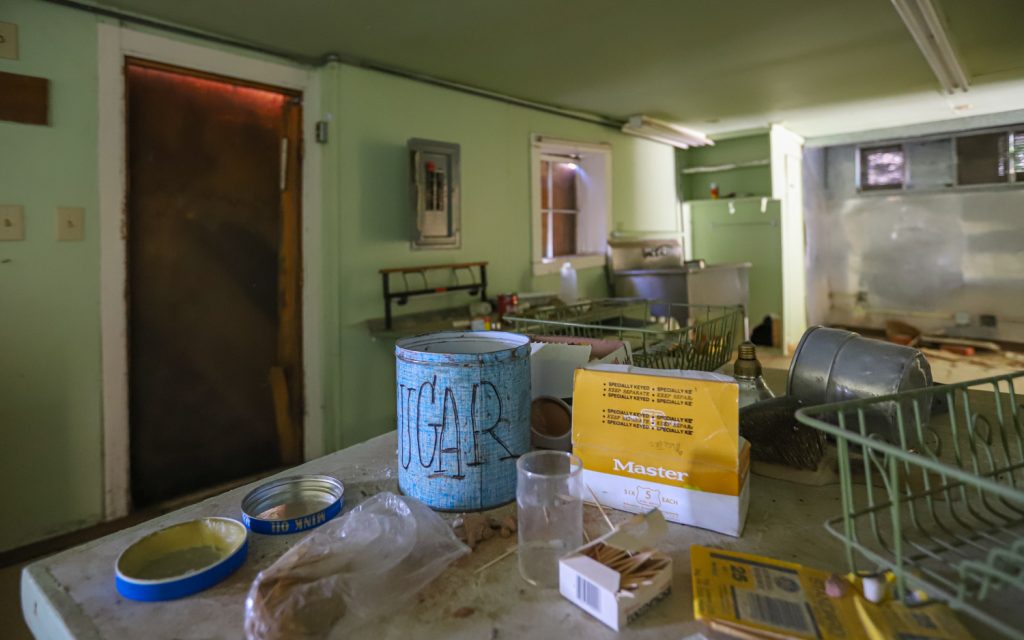
the cook shack, today containing the remains of later efforts to mine gold from the tailings piles
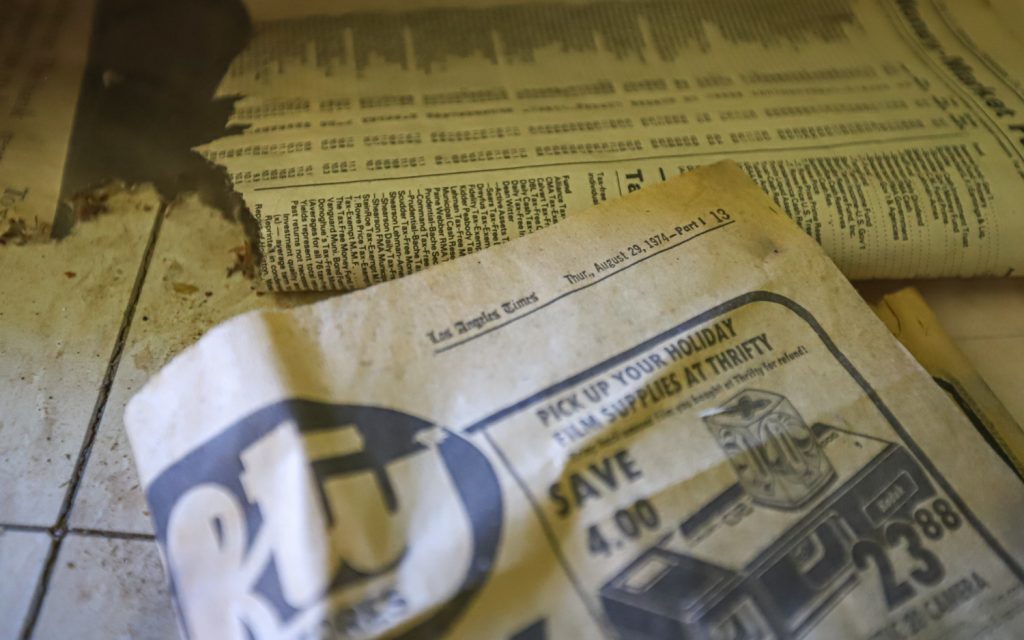
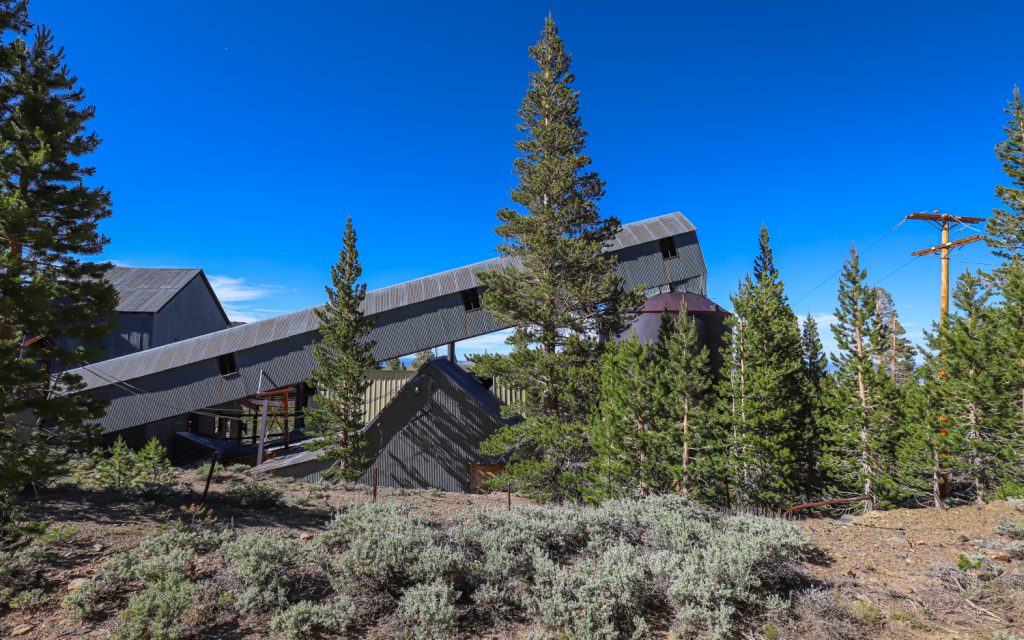
a slanted conveyor belt ran ore from the first tumbler into the second throughout the process of milling rock onsite
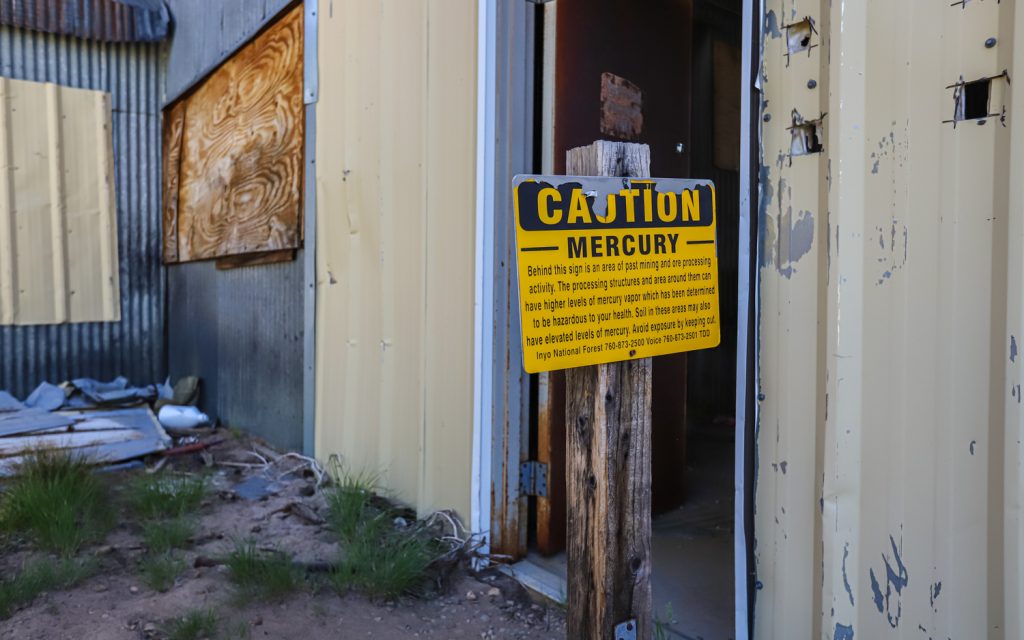
the discovery of mercury contamination introduced to help in the milling process curtailed efforts to gain historical recognition for the mine site
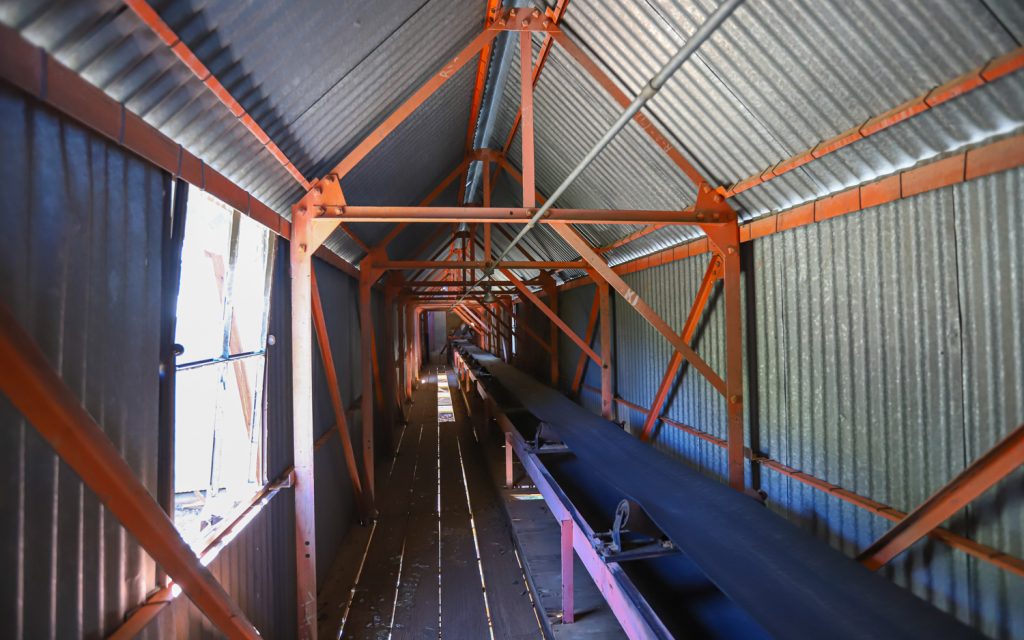
inside the slanted conveyor hall
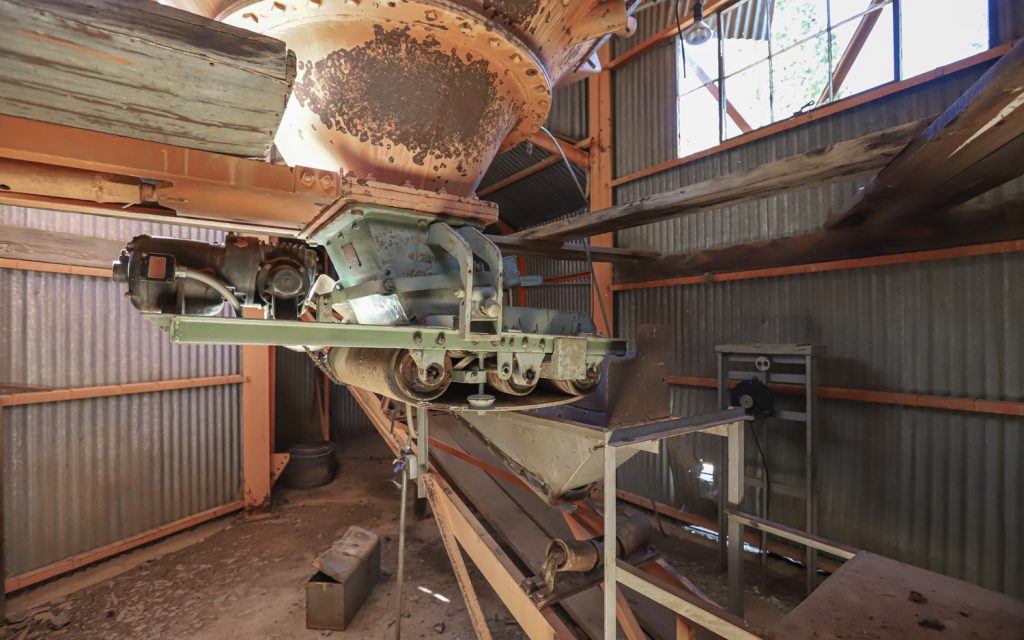
bottom of the tumbler
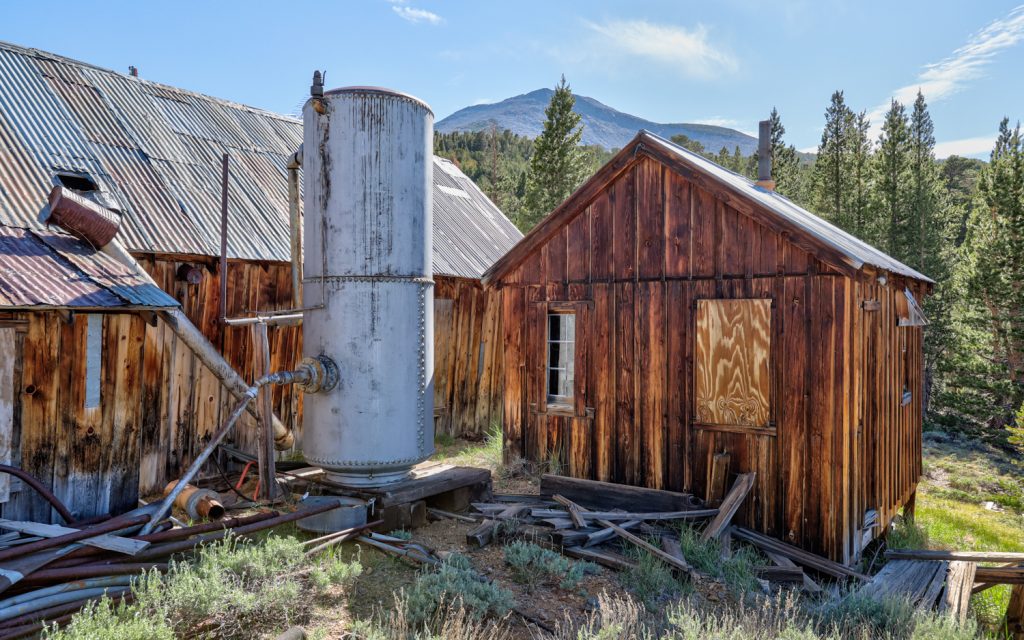
the mine sits at almost 10,000′ in elevation near the peak of the mountains
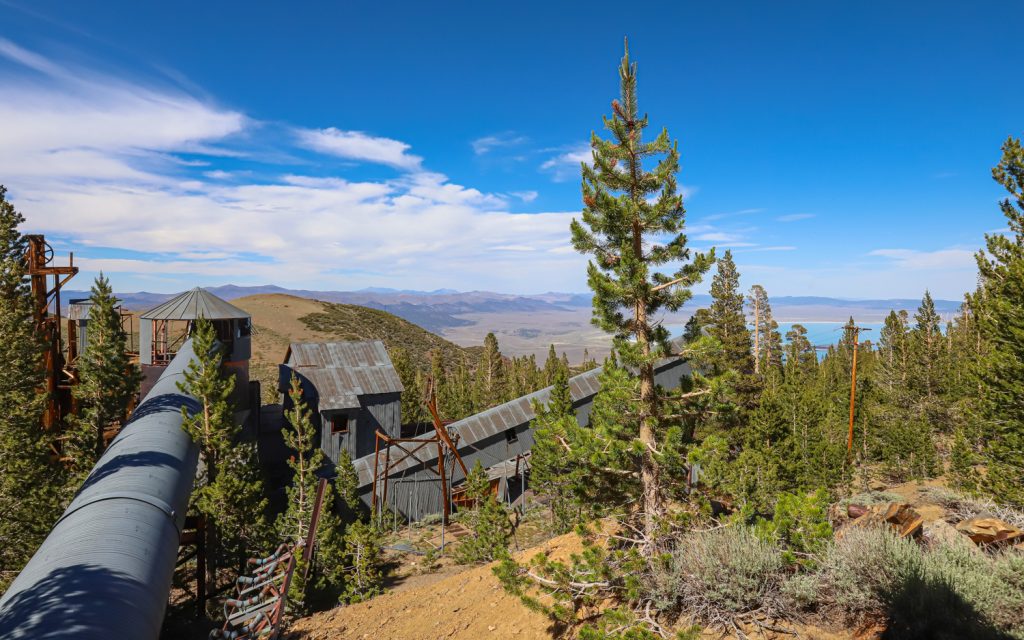
Log Cabin gold mine in Mono County
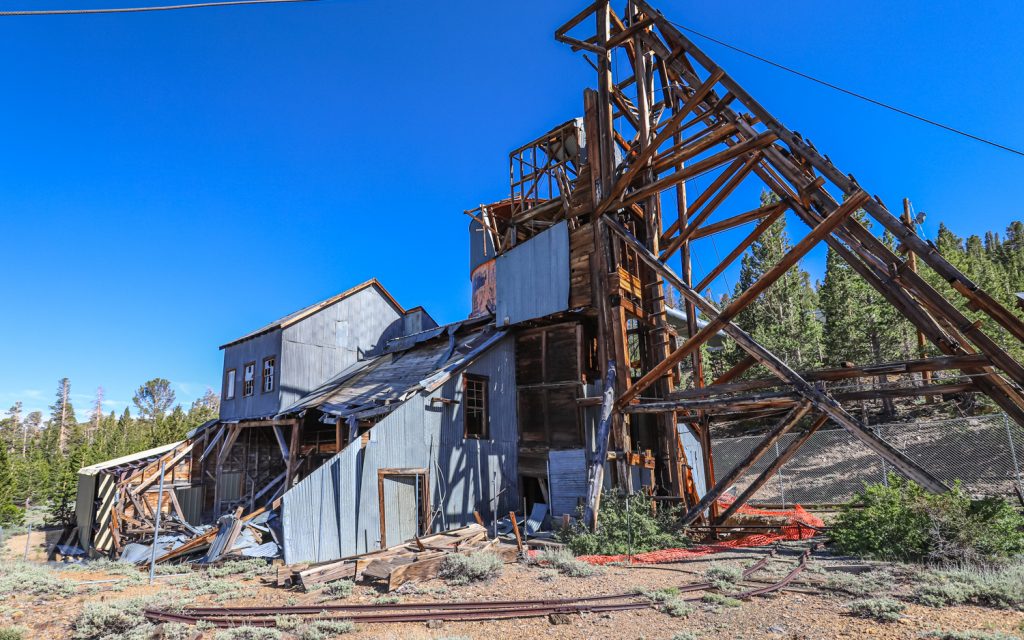
See our other blog posts here.
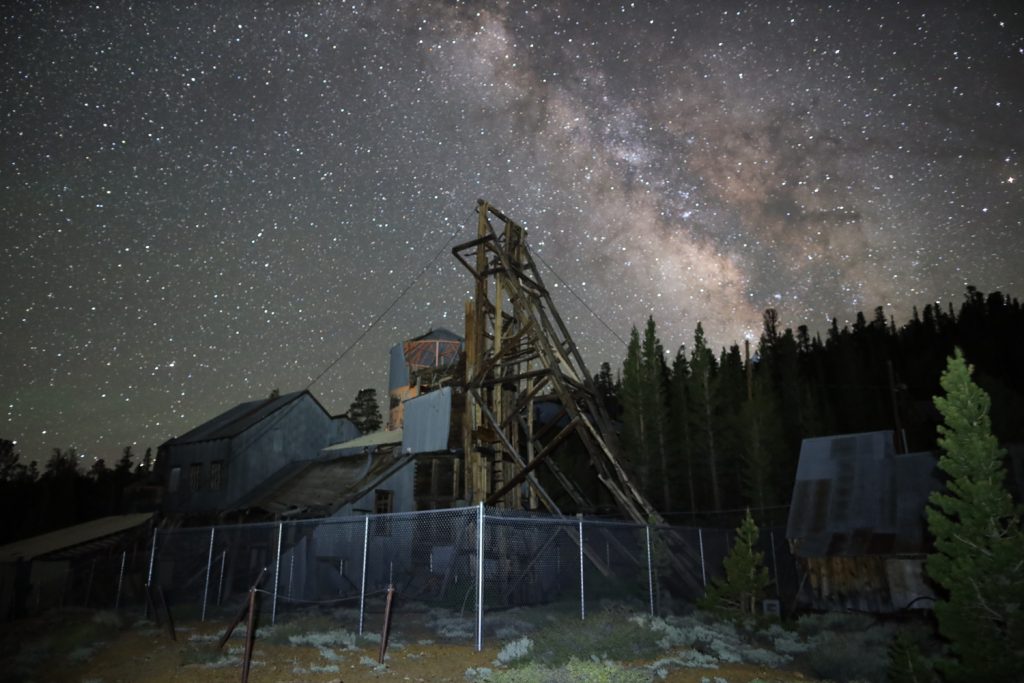
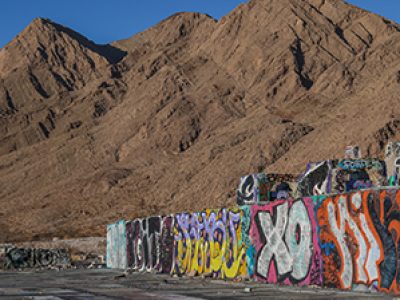
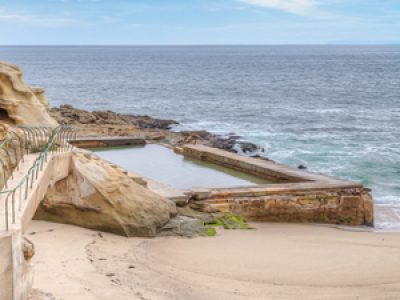
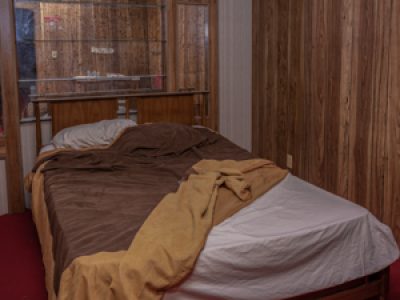
Great photos!
Epic..my email is correct
Could you please call me at 213-453-1736,I am very interested on this property. Thank you
as above